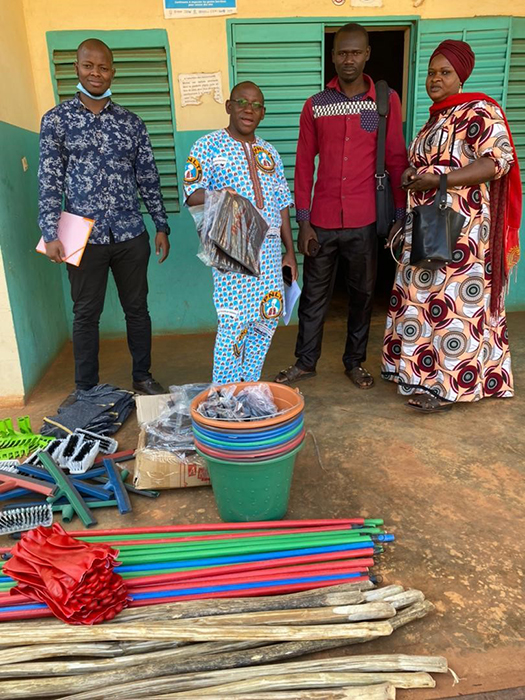Ebola: Prevention and response in Mali
This piece was published on the USAID website on Wednesday, April 27, 2022.

Ebola response materials donated to the CSRefs of Sagabari and Keniéba
In February 2021, Guinea announced a confirmed case of Ebola Virus Disease (EVD). The presence of this disease in West Africa brought reminders of the 2013–2014 epidemic in the region and forced neighboring countries to take strong and immediate measures. In Mali, this resulted in development of a national Ebola prevention and response plan designed to coordinate activities, train health staff, and provide equipment to mount an effective response.
To prepare the country for a potential Ebola outbreak, Mali’s Directorate for Public Health and Hygiene (DGSHP) requested help in implementing the EVD prevention and response plan. The US Agency for International Development (USAID) responded by tasking Medicines, Technologies, and Pharmaceutical Services (MTaPS) to improve the infection prevention and control (IPC) capacity of Mali’s health workforce.
Support for an Effective Response
In mid-2021, MTaPS supported the Ministry of Health and health directorates in the regions of Kayes, Koulikoro, and Sikasso to assess the EVD management capacity of health district referral centers (CSRefs). Using the World Health Organization’s Ebola scorecard, the assessment highlighted weaknesses in waste management, handwashing, patient triage, and equipment to protect staff from exposure to the virus.
Following the assessment, MTaPS worked with CSRefs to develop action plans and provided Ebola prevention and control training, visual aids, and videos addressing these weaknesses. MTaPS trained staff in seven CSRefs and 32 community health centers near the border with Guinea on the characteristics of EVD; protocols for using personal protective equipment; biowaste management; injection security; safe and respectful burials; and disinfecting environments, clothes, and health care equipment. Those trained included administrators, doctors, pharmacists, hygienists, medical assistants, midwives and nurses. The CSRefs also received EVD prevention and control equipment, such as cleaning products for staff hygiene and disposal bins for waste management.
Improved Hygiene and Preparedness
MTaPS followed up with the DGSHP and regional health directorates to organize supervision of Ebola response activities. All seven CSRefs implemented their action plans with five of them reaching 75% on the WHO scorecard and moving from intermediate to advanced level. This IPC assistance produced measurable gains in Mali’s capacity for stronger Ebola prevention and response—a key approach to boosting health security in Mali and beyond as part of the United States’ Global Health Security Agenda.